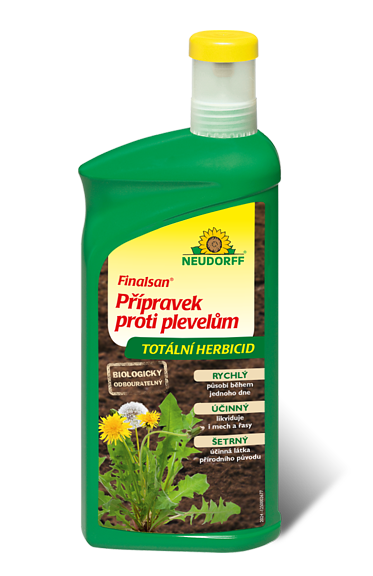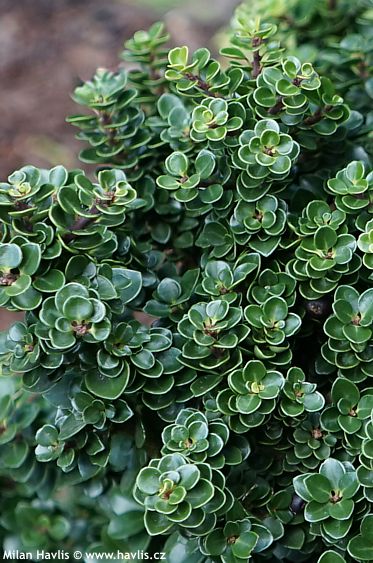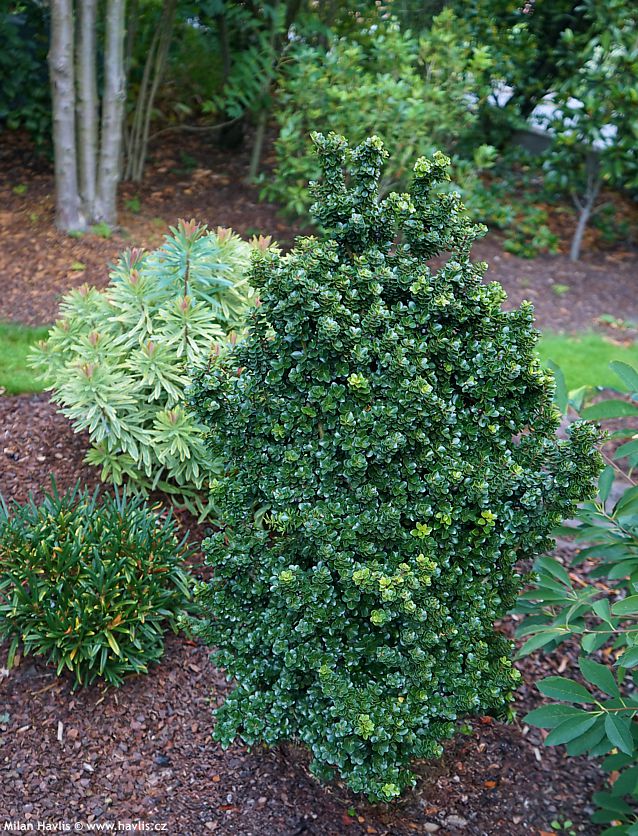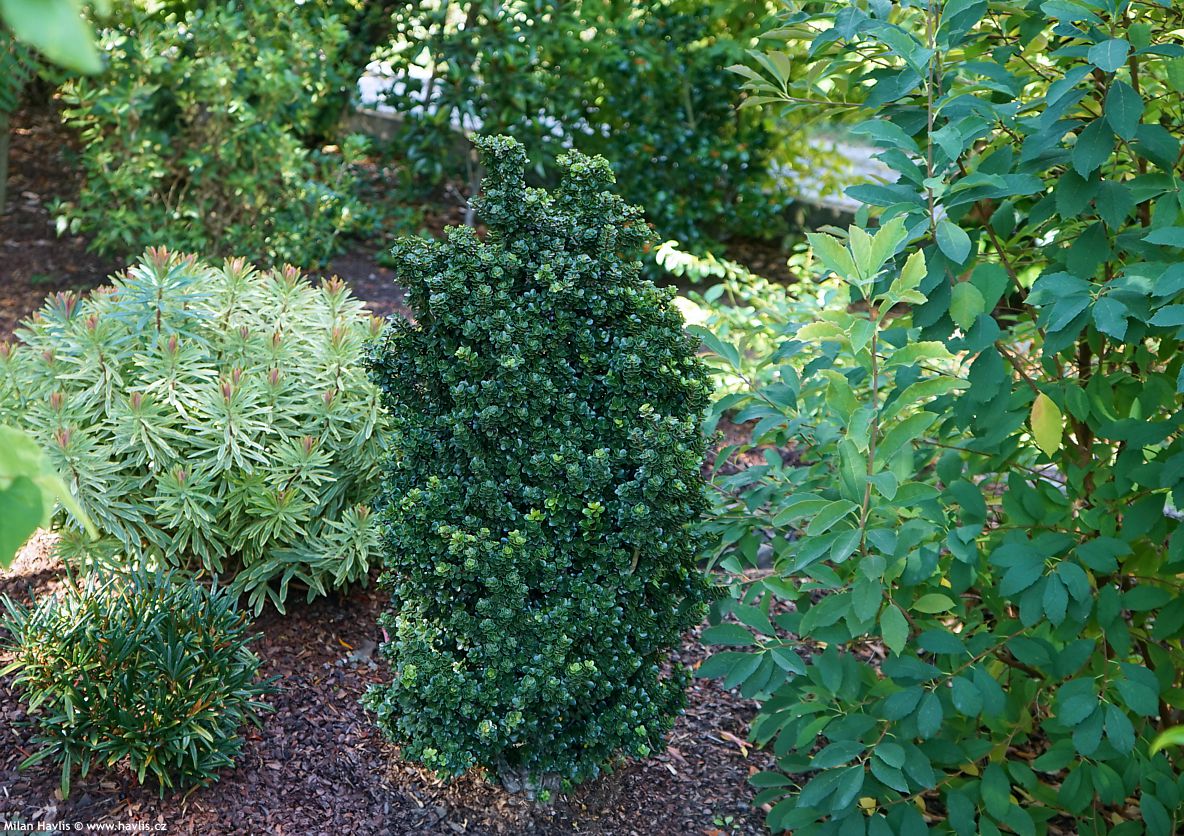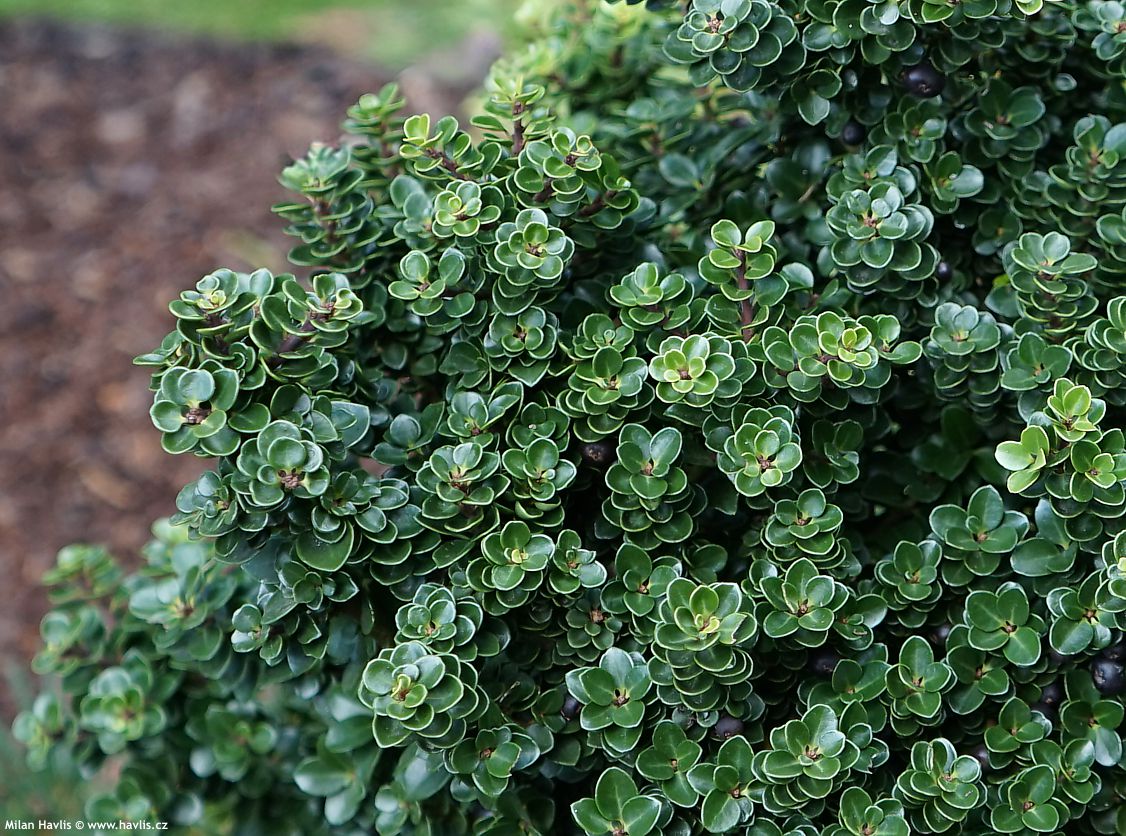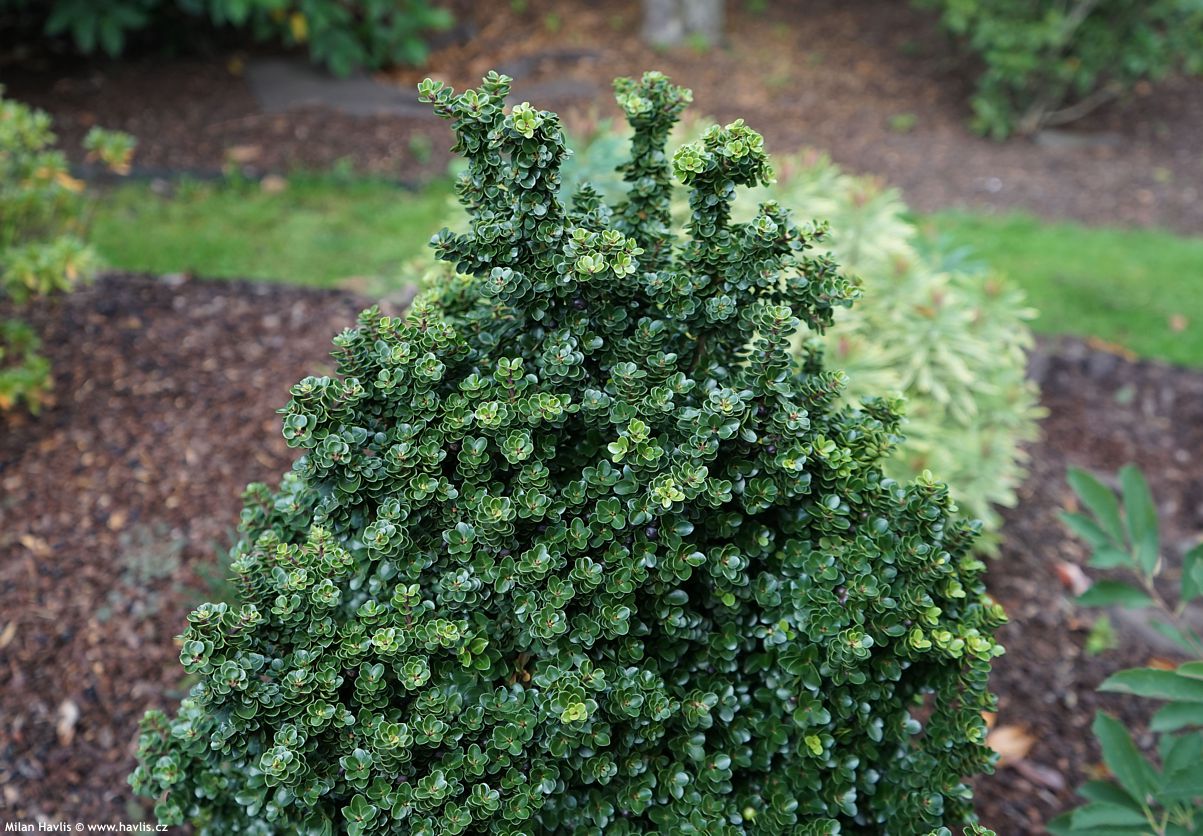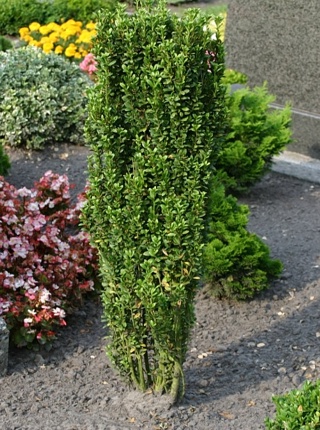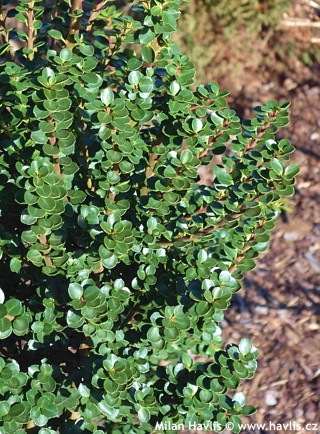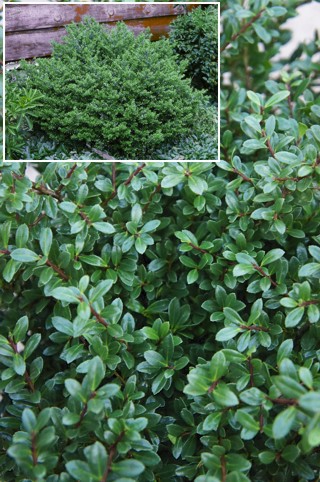Ilex crenata 'DWARF PAGODA' Japanese holly
Ilex
The genus Ilex, commonly known as holly, is very extensive and includes more than 400 species of evergreen and deciduous shrubs and trees, distributed from the tropics of South America through the subtropics of Asia to the temperate zones of Europe. In addition to the possibility of variegated foliage, their greatest advantage is evergreen character, at least in most species, which makes them an excellent complement to deciduous trees and shrubs during the dormant season. Moreover, many hollies naturally lack spines, which will please those who dislike prickly shrubs. The most horticulturally significant are the East Asian species, among which the Japanese holly (Ilex crenata) stands out. This species was described in 1784 by the Swedish botanist Carl Peter Thunberg (1743–1828) during his stay in Japan.
Japanese hollies are very useful and elegant evergreen shrubs that many people at first glance mistake for boxwoods or honeysuckles because of their small, glossy leaves. This very resemblance has predestined them to become the ideal replacement for true boxwoods, which in Europe are gradually disappearing under the pressure of the massive invasion of the box tree moth and due to the fungal disease known as box blight, which has been devastating plantings especially in the British Isles. Japanese hollies, however, are thornless, offer a wide range of shapes and sizes, and require only minimal care. Since they are naturally quite variable, new mutations and cultivars often appear, each slightly different from the last – and every novelty is, of course, a welcome delight.
The Japanese holly Dwarf Pagoda is among the most striking dwarf forms ever bred. It originated in the USA thanks to Dr. Elwin Orton at Rutgers University in 1972 and has since earned a reputation as a collectors’ gem. It grows extremely slowly, often only a few centimeters per year, forming a dense, compact shrub with tiny, almost round, dark green, glossy leaves resembling miniature coins. Its habit is naturally tiered – just like the silhouette of a pagoda, the traditional multi‑storied tower in East Asian architecture. This is a female cultivar that in mid‑spring produces abundant clusters of tiny, creamy flowers, providing valuable bee food. If pollinated by a nearby male plant, it bears small, shiny black fruits in autumn, which serve as winter food for birds. For humans they are not poisonous, but they do contain small amounts of saponins that may cause digestive discomfort if consumed in larger quantities.
‘Dwarf Pagoda’ is a rarer cultivar and, with its appearance, a true jewel, so it deserves to be treated as a small specimen. It naturally acts as a miniature architectural element, maintaining a regular shape even without pruning. It can be used in Japanese gardens, in small evergreen beds, in rockeries surrounded by gravel, or in elegant containers on terraces or at entrances, where it provides year‑round attraction. Thanks to its mature size of around 1.2 m after several decades, it takes up little space yet makes a strong impression. It is also well suited to bonsai containers, where its slow growth makes long‑term shaping easier.
Japanese holly is tolerant of most soil types except heavy clay, but it thrives best in well‑drained, evenly moist, acidic soil, occasionally enriched with slow‑release fertilizer. It has a strong root system that copes better with poorer conditions than English hollies and adapts easily to the limited root space of containers without showing signs of stress or drought. It is hardy to about −27 °C (USDA zone 5) and is also suitable for outdoor planters with good drainage and where it requires more frequent but careful watering, including during frost‑free winter days.
Last update: 01-10-2025






























